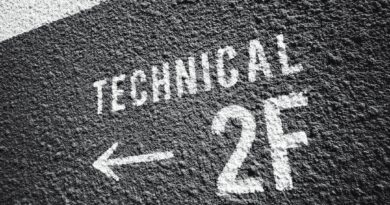How does VAT (Value Added Tax) work in Europe and can I get a refund as a tourist?
Value Added Tax (VAT) is a type of consumption tax that is applied to goods and services throughout Europe. It is a form of indirect taxation that is collected by the government from businesses and individuals in order to finance public spending. VAT is an important source of revenue for many European countries and is a major factor in the overall economic stability of the region.
The European Union (EU) has a common VAT system that applies to all member states. This system is designed to ensure that businesses and individuals in the EU pay the same amount of VAT regardless of where they are located. The standard rate of VAT across the EU is currently set at a minimum of 15%. However, some countries have reduced rates for certain goods and services, such as food, books, and children’s clothing.
VAT is charged on the sale of goods and services, and is calculated as a percentage of the price of the item or service. The amount of VAT charged depends on the type of product or service and the country in which it is sold. For example, in the UK, the standard rate of VAT is 20%, while in France it is 19.6%.
When a business sells a product or service, it must charge the appropriate amount of VAT and submit the payment to the relevant tax authority. The business is then able to reclaim the VAT it has paid on its purchases, such as raw materials and equipment. This is known as input tax.
As a tourist, you may be able to get a refund on the VAT you have paid while visiting Europe. This is known as a VAT refund and is available to non-EU residents who have purchased goods or services in the EU. To be eligible for a VAT refund, you must have spent a minimum amount of money in the country where you made the purchase. You must also have proof of purchase, such as a receipt or invoice, and you must be able to prove that you are not a resident of the EU.
Once you have met the requirements for a VAT refund, you can apply for the refund at the point of purchase or at the airport when you leave the country. You will need to provide proof of purchase and proof of your non-EU residency. The refund amount will depend on the amount of VAT you have paid and the country in which you made the purchase.
In conclusion, Value Added Tax (VAT) is an important source of revenue for many European countries and is a major factor in the overall economic stability of the region. As a tourist, you may be able to get a refund on the VAT you have paid while visiting Europe, provided you meet the requirements for a VAT refund.
Value Added Tax (VAT) is a form of indirect taxation that is applied to the majority of goods and services purchased in Europe. It is a tax on the value added to a product or service at each stage of production, from the raw materials to the finished product. The amount of VAT charged on a product or service depends on the country in which it is purchased, and the rate of VAT varies from country to country.
As a tourist in Europe, it is important to understand how VAT works and how it affects the prices of goods and services you purchase. This article will provide an overview of how VAT works in Europe and explain how tourists can claim a refund on the VAT they pay.
How Does VAT Work in Europe?
VAT is a tax that is applied to the value added to a product or service at each stage of production. It is charged on the value of the goods or services at the time of sale, and the rate of VAT varies from country to country. In the European Union, the standard rate of VAT is set at a minimum of 15%. Some countries, such as the UK, have a higher rate of 20%.
VAT is collected by the seller of the goods or services and is then paid to the government. The seller is responsible for collecting the VAT from the customer and then remitting it to the government. The customer does not pay the VAT directly to the government, but instead pays it to the seller.
Can I Get a Refund as a Tourist?
As a tourist in Europe, you may be eligible to claim a refund on the VAT you pay on certain goods and services. To be eligible for a refund, you must meet certain criteria, such as being a non-resident of the country in which you are making the purchase.
In order to claim a refund, you must present your original receipts to the customs office in the country in which you made the purchase. You will then be required to fill out a form and provide proof of your identity. Once the form is completed, you will be issued with a VAT refund form. This form must be presented to the seller of the goods or services in order to receive the refund.
In some countries, you may be able to claim a refund directly from the government. For example, in the UK, you can claim a refund from HM Revenue & Customs. In other countries, you may need to use a third-party service, such as a VAT refund agency, to claim your refund.
Conclusion
VAT is a form of indirect taxation that is applied to the majority of goods and services purchased in Europe. The amount of VAT charged on a product or service depends on the country in which it is purchased, and the rate of VAT varies from country to country. As a tourist in Europe, it is important to understand how VAT works and how it affects the prices of goods and services you purchase.
Tourists may be eligible to claim a refund on the VAT they pay on certain goods and services. To be eligible for a refund, you must meet certain criteria, such as being a non-resident of the country in which you are making the purchase. In order to claim a refund, you must present your original receipts to the customs office in the country in which you made the purchase. In some countries, you may be able to claim a refund directly from the government, while in other countries, you may need to use a third-party service, such as a VAT refund agency, to claim your refund.




